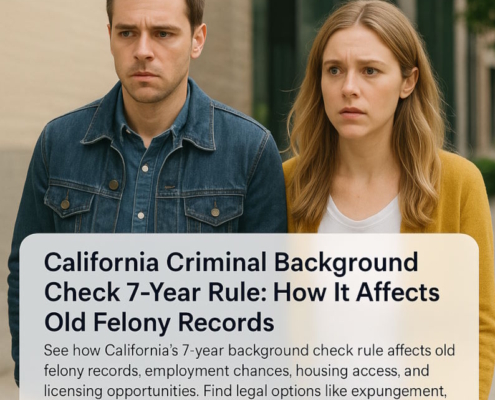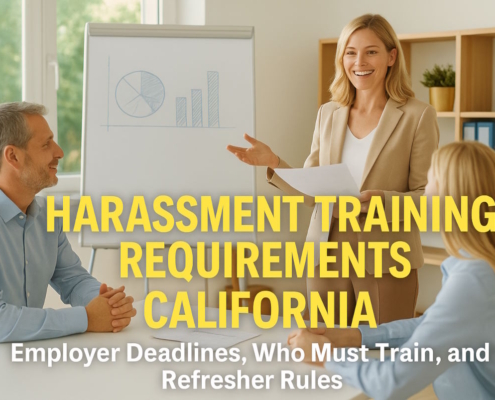Introduction
It is important for employers to periodically evaluate their personnel paperwork policies. It includes retention policies and the methods used to store this data.
Effective April 2022, employers should assess the following five record retention issues:
1. Are time logs for employees kept for a minimum of four years?
If you are an employer and have this question in mind: “How long to keep payroll records?” read on to know the details.
Under California law, the statute of limitations for wage and hour class lawsuits can go back up to four years, and in the majority of cases, time records are going to be the main concern. Employers are required by California law to keep track of the start and end times of their hourly, non-exempt workers. Additionally, the rule mandates that companies document their employees’ 30-minute meal breaks. The timing system must be precise.
Instead of merely using both software and hardware default settings, employers must participate in the system’s installation and configuration. Recognize what the framework is monitoring and how it is capturing the information. To effectively address any concerns, employers ought to have a complaint system in place and inform staff members of the policy on a regular basis.
To stay compliant with rules on “How long to keep payroll records?” it’s recommended that employers keep time logs and related data for at least four years.
2. Is the employer backing up and storing schedules and pay stubs?
Section 226 of the Labor Code mandates that employers give pay stubs to workers “semimonthly or at the point of every payment of wages.” Employers are required to retain a copy of pay stubs for “a minimum of three years” under Section 226(a). Since the statute of limitations for labor code breaches can go back four years, as was previously indicated, many businesses keep these documents for that extended period.
Employers ought to look into the location and method of saving the pay stubs. Section 226 allows for digital copies of the pay stubs, provided that the electronic backup appropriately displays all of the data that must be on the pay stubs.
Companies shouldn’t depend on their payroll provider to keep copies of these records. First, it is the employer’s responsibility to keep these records, even though many payroll agencies don’t. Second, it could be challenging to retrieve the payroll data from the previous payroll provider if the business switches payroll providers.
Copies of staff schedules are frequently disregarded, yet they are essential when fighting against wage and hour claims. A lot of firms are also keeping copies of worker schedules for 4 years since pay claims have a four-year statute of limitations. When considering “How long to keep payroll records?” experts recommend a four-year minimum.
3. Are employee records kept private for a minimum of four years?
California’s Government Code 12946 was revised in 2021 by SB 807, which mandated that companies keep personnel files and other documents for a minimum of four years. According to Government Code section 12946, employers must keep all application, personnel, membership, and employment referral paperwork and records for at least four years after they were established or received. They must keep the personnel files of candidates or fired employees for at least four years after the employment action was taken.
When discussing “How long to keep payroll records?” it’s worth noting that payroll authorizations, wage garnishment notices, and wage theft notices are considered part of the broader “personnel file” for retention purposes.
Prior to SB 807’s passing, many employers kept personnel files for a period of four years because California law allows many wage & hour statutes of limitations to go back four years.
There is a great deal of uncertainty regarding what papers belong in an employee’s personnel file because California law fails to define the phrases “personnel records” or “personnel file.”
The following guidelines are set by the Division of Labor Standards Enforcement but are not enforceable on employers.
Records that are used or were previously used to assess an employee’s eligibility for a promotion, higher pay, or punishment, including termination, are typically categorized as “personnel records.” Examples of “personnel records” include the following (but this list is not exhaustive):
- Employment application
- Payroll authorization form
- Notices of recognition, warning, punishment, and/or termination
- Layoff, leave of absence from work, and vacation notices
- Wage garnishment or attachment notices
- Records and announcements pertaining to training and education
- Performance evaluations and reviews
- Attendance logs
The following documents should also be included in personnel files by employers:
- Arbitration agreements signed
- Records of compliance with sexual harassment policies for supervisors
- Employees should sign policy acknowledgements, such as handbook acknowledgments, confidentiality/proprietary information contracts, and acknowledgments for meals and rest breaks.
- Non-exempt employees’ notification under the Wage Theft Protection Act
- A written commission contract that is signed by the worker and the employer if the worker is commissioned.
- Disciplinary action papers and warnings.
- Performance evaluations
- Any grievance documents pertaining to the employee
- Records of the employee’s employment date
- Documentation indicating the cause for leaving the company and the final day of work
Additionally, keep in mind that companies are obligated by California law to maintain records of sexual misconduct training for managers and staff members for a minimum of two years.
4. Are I-9 Forms kept for a sufficient amount of time and in a way that makes them conveniently accessible?
I-9 forms must be retained by employers for a period of three years from the date of appointment or one year following termination, whichever comes first. Form I-9 must be produced by employers for an inspection within a minimum of three business days.
5. Do managers and supervisors receive training on the company’s forms and documents, what has to be recorded, and who is in charge of document preservation?
If supervisors and managers are not also informed of the company’s document preservation standards, it makes no difference how good the policies are. This training should include information on “How long to keep payroll records?” especially for non-HR personnel who interact with employee files.
- Do managers know the forms they can use to record employee absences, disciplinary actions, and other common issues?
- How are requests for accommodations for people with disabilities documented, and who reviews them?
- Are the following forms standardized by the managers?
a. Employee disciplinary actions and documentation.
b. Recording the tardiness of employees.
- How are the absences of employees recorded?
- How are employee records sent to the relevant management or Human Resources?
- Who is in charge of keeping the document on paper or in an electronic format?































